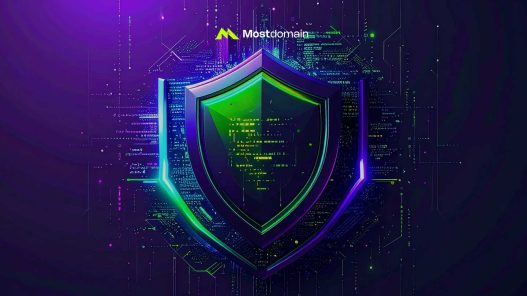What Are Secure Coding Practices? – Secure coding practices are essential in today’s digital world to protect sensitive data and maintain system integrity. These guidelines and techniques, used during software development, aim to minimize vulnerabilities and safeguard applications from malicious attacks. This article explores the definitions, significance, and implementation strategies of secure coding to promote safer software development.
Understanding Secure Coding Practices
What Are Secure Coding Practices?
Secure coding practices are a collection of best practices, techniques, and standards that developers follow to ensure their code is resilient against security vulnerabilities. Essentially, they are the proactive measures taken during the coding phase to prevent flaws that could be exploited by attackers. This proactive approach contrasts with reactive security measures like patches or updates that address issues after they are discovered.
In simple terms, secure coding is about writing code that does not inadvertently introduce security risks. It involves adhering to principles such as input validation, proper authentication, data encryption, error handling, and least privilege access. By following these practices, developers can reduce risks like,
- SQL injection (SQLi): A cyberattack where malicious SQL code is inserted into input fields of an application to manipulate its backend database, allowing unauthorized access, modification, or deletion of data.
- Cross-site scripting (XSS): A type of security vulnerability where attackers inject malicious client-side scripts into web pages viewed by other users, often to steal data or hijack sessions.
- Buffer overflows: A vulnerability where a program writes more data to a buffer than it can hold, overwriting adjacent memory and potentially leading to crashes or arbitrary code execution.
Why Are Secure Coding Practices Important?
The significance of secure coding practices stems from the increasing frequency and sophistication of cyber attacks. According to recent reports, a substantial percentage of security breaches originate from software vulnerabilities that could have been prevented with proper coding standards. Implementing secure coding practices helps in:
- Protecting user data and privacy
- Ensuring compliance with legal and regulatory standards
- Reducing costs associated with fixing security issues post-release
- Maintaining a company’s reputation and trustworthiness
- Minimizing the risk of financial loss or operational disruption
Core Principles of Secure Coding
Input Validation
One of the most fundamental secure coding practices is input validation, ensuring that all data received from users or other systems is checked for correctness and safety before processing. This prevents injection attacks and data corruption.
Authentication and Access Control
Proper implementation of authentication mechanisms ensures that only authorized users can access certain features or data. Role-based access control (RBAC) restricts users to only the functions they need.
Data Encryption
Encrypting sensitive data both in transit and at rest protects against eavesdropping and data breaches. Secure coding incorporates encryption standards like AES (Advanced Encryption Standard) or TLS (Transport Layer Security).
Error Handling and Logging
Handling errors securely involves avoiding exposure of sensitive information through error messages and maintaining detailed logs for audit purposes without compromising security.
Secure Session Management
Managing user sessions securely, such as using secure cookies and session timeouts, helps prevent session hijacking and fixation attacks.
Best Practices in Secure Coding
1. Keep Software Up-to-Date
Regularly update dependencies and libraries to patch known vulnerabilities. Outdated software can be an easy entry point for attackers.
2. Use Security-Focused Coding Frameworks and Libraries
Leverage frameworks that incorporate security features by default, such as input sanitization and secure authentication modules.
3. Conduct Code Reviews and Static Analysis
Perform frequent code reviews and utilize static analysis tools to identify vulnerabilities early in development.
4. Implement Principle of Least Privilege
Grant users and processes only the permissions they need to perform their tasks, reducing the potential attack surface.
5. Practice Defense in Depth
Layer multiple security controls into the system to provide redundancy in case one layer is compromised.
Tools and Resources for Secure Coding
Below are some of the top tools that assist developers in maintaining secure coding standards:
| Tool | Description | Key Features | Price | User Ratings |
| Fortify Static Code Analyzer | Automated security testing | Identifies security defects early | Paid | 4.5/5 |
| OWASP Dependency-Check | Dependencies vulnerability analysis | Detects vulnerable libraries | Free | 4.0/5 |
| SonarQube | Continuous code quality inspection | Security, bugs, and code smells | Free/Enterprise | 4.4/5 |
| Veracode | Application security testing | SAST (Static Application Security Testing), DAST (Dynamic Application Security Testing), and intelligence | Paid | 4.2/5 |
| Checkmarx | Static application security testing | Integration with CI/CD pipelines (Continuous Integration/Continuous Delivery pipelines) | Paid | 4.3/5 |
Implementing Secure Coding Practices: Step-by-Step
- Educate Development Teams: Conduct regular training on security principles and common vulnerabilities.
- Develop Secure Coding Policies: Create documented standards aligned with industry best practices, such as OWASP Top Ten.
- Perform Threat Modeling: Identify potential vulnerabilities during the design stage.
- Integrate Security into the Development Lifecycle: Make security a core component of planning, coding, testing, and deployment.
- Automate Security Testing: Use static and dynamic analysis tools in continuous integration pipelines.
- Respond to Vulnerabilities Quickly: Establish processes to patch issues promptly.
Common Secure Coding Pitfalls and How to Avoid Them
- Ignoring Input Validation: Always validate and sanitize user inputs.
- Hardcoding Credentials: Use environment variables or secure vaults instead of embedding secrets.
- Inadequate Error Handling: Avoid revealing system details in error messages.
- Using Outdated Libraries: Regularly audit dependencies for vulnerabilities.
- Neglecting Secure Session Management: Implement secure cookies and session expiry mechanisms.
The Path Forward: Sustaining Secure Software
Secure coding practices are essentially the rules and techniques developers follow to build strong, safe software. They involve things like checking user input, making sure people are who they say they are, scrambling sensitive data, handling mistakes properly, and being aware of security risks. By doing these things, developers can make their software less vulnerable to attacks, stop cyber threats, follow legal rules, and keep user information safe. It’s an ongoing effort to keep our digital world secure.
References:
- OWASP Foundation. (2023). OWASP Top Ten Project: The Ten Most Critical Web Application Security Risks. OWASP.
- Fortify. (2024). Fortify Static Code Analyzer: Automated Security Testing Documentation. Micro Focus.
- OWASP Foundation. (2024). OWASP Dependency-Check: Software Composition Analysis Tool. OWASP.
- SonarSource. (2024). SonarQube: Continuous Code Quality and Security Inspection Platform. SonarSource SA.
- Veracode. (2024). Application Security Testing: SAST and DAST Solutions. Veracode Inc.
- Checkmarx. (2024). Static Application Security Testing for CI/CD Integration. Checkmarx Ltd.
- National Institute of Standards and Technology. (2023). Advanced Encryption Standard (AES). NIST Special Publication.
- Internet Engineering Task Force. (2023). Transport Layer Security (TLS) Protocol Version 1.3. IETF RFC 8446.
- McGraw, G. (2022). Software Security: Building Security In. Addison-Wesley Professional.
- Howard, M., & LeBlanc, D. (2021). Writing Secure Code: Practical Strategies and Proven Techniques for Building Secure Applications. Microsoft Press.



















